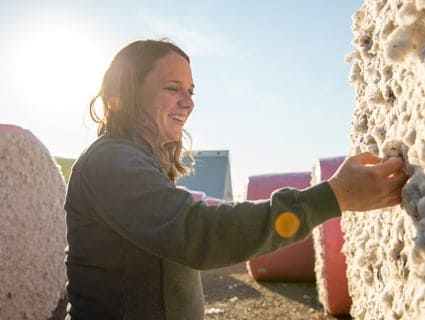The bioeconomy: What it is and why it matters in food and agriculture
Read Time: 6 minutes
February 22, 2024
When you think about the future of food, taste and nutrition might be the first things that come to mind.
However, the future is also about how your food is grown, produced, delivered — and even reused.
For example, did you know …
… you can use discarded cocoa shells to create fertilizer to grow wheat?
… you can upcycle citrus peels to create a hydrating and cooling face moisturizer?
… you can turn used cooking oil into fuel that powers trucks and ships delivering food around the world?
These are examples of the bioeconomy at work.
What is the bioeconomy?
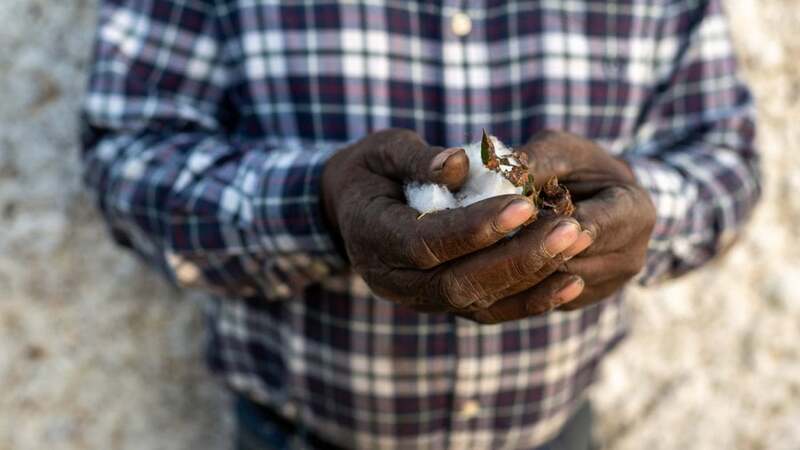 The bioeconomy uses renewable, nature-based resources — plants like the above, micro-organisms and even certain types of waste — to create food, materials, energy and more.
The bioeconomy uses renewable, nature-based resources — plants like the above, micro-organisms and even certain types of waste — to create food, materials, energy and more.
While it has many definitions, the bioeconomy uses renewable, nature-based resources — like plants, micro-organisms and even certain types of waste — to produce food, materials, energy and more.
The goal? The bioeconomy aims to create a more sustainable ecosystem that can address some of our world’s biggest challenges. This includes food security, climate change, sustainable development and how we make the most of natural resources.
While the bioeconomy spans many industrial sectors, food systems play the largest role in the global bioeconomy, according to the Food and Agriculture Organization of the United Nations. That's why it represents a critical path toward feeding — in a sustainable manner — a world projected to reach 9 billion people by 2050 and where climate change continues to disrupt the agricultural status quo.
What is a circular bioeconomy?
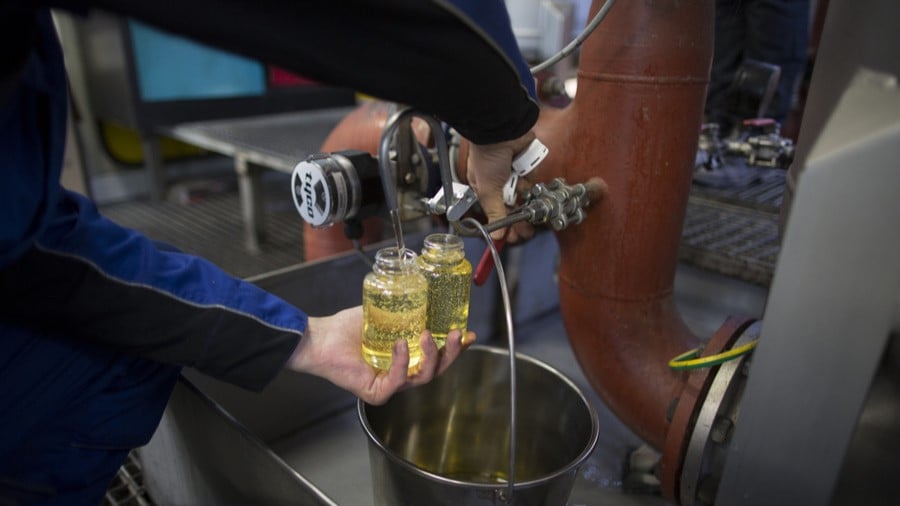 In contrast to a “single use” approach that creates waste, a circular economy turns waste streams into worth. It can limit waste, pollution and biodiversity loss.
In contrast to a “single use” approach that creates waste, a circular economy turns waste streams into worth. It can limit waste, pollution and biodiversity loss.
A circular bioeconomy brings together two sustainability concepts: 1) It uses renewable biological resources to create biological products (i.e. the bioeconomy) and 2) it reuses, repurposes or recycles those resources and organic waste back into the economy (i.e. the circular economy).
In contrast to a “single use” approach that creates waste, a circular economy turns waste streams into worth. It can limit waste, pollution and biodiversity loss. In the process it also helps address larger global challenges like climate change and economic growth.
There’s vast potential to create a more circular economy across supply chains, including in agriculture. Case in point: only 7.2% of used materials were cycled back into the economy in 2023, according to the Circularity Gap Reporting Initiative.
How we’re bringing the bioeconomy to life in food and agriculture
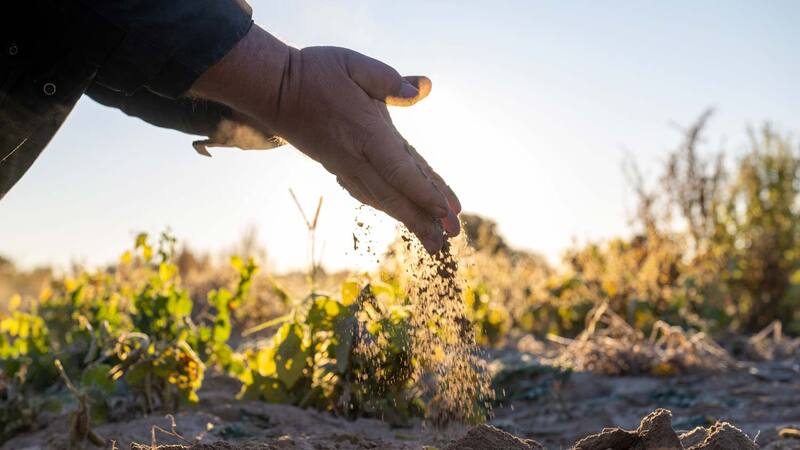 The bioeconomy includes bio-based food and animal feed, bio-based products, and bioenergy.
The bioeconomy includes bio-based food and animal feed, bio-based products, and bioenergy.
At Cargill, we’re focused on advancing the bioeconomy across three main areas: 1) bio-based food and animal feed, 2) bio-based products and 3) bioenergy.
“We're using research and innovation to provide nature-based solutions that are good for our customers and the planet,” says Florian Schattenmann, chief technology officer and vice president of research & development and innovation at Cargill.
"We believe in the power of a bio-based economy, and we believe we play a central role," Florian says. "We bring quality, functionality and scalability to innovate in ways that consumers really want."
Here are a few ways we're innovating to bring the bioeconomy to life.
Innovation via fermentation for the bioeconomy
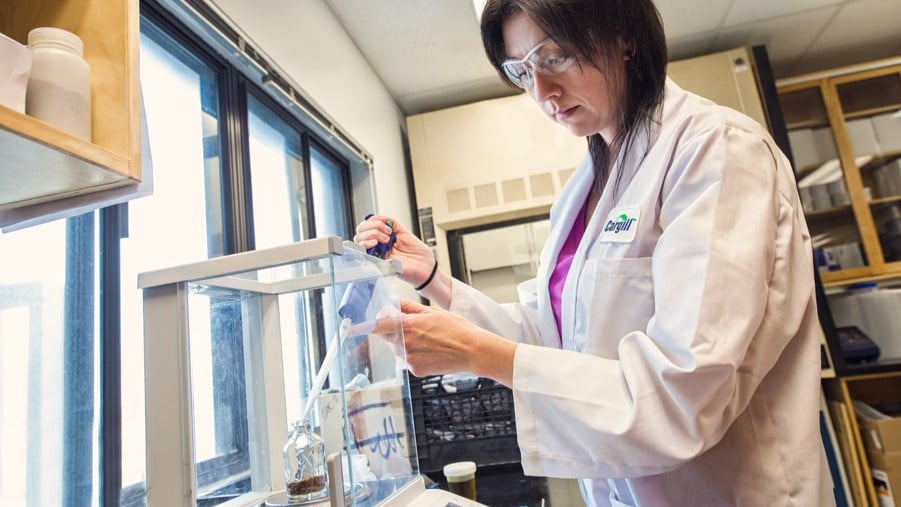 Fermented products like Motiv® shrimp feed is helping shrimp farmers drive the bioeconomy through more sustainable, effective yields.
Fermented products like Motiv® shrimp feed is helping shrimp farmers drive the bioeconomy through more sustainable, effective yields.
When you think about fermentation, foods like yogurt and sauerkraut might come to mind.
But we’re also using the age-old metabolic process to bring new innovations in food and animal feed. Those innovations include:
- Our fermented Motiv® shrimp feed, which dramatically reduces Early Mortality Syndrome outbreaks and increases farmers’ yields.
- EverSweet®, a fermented stevia sweetener with a sustainable production process that uses less land and water and produces less carbon.
- Our proprietary collection of food-grade microorganisms, which are helping customers who want to reduce the sugar and salt in their products and simplify their label.
- Cargill, Gas2Feed and the Norwegian Research Institute Norse have partnered to address the Norwegian government’s ambition for scalable and sustainable fish feed. Using special bacteria, we convert carbon dioxide, along with hydrogen and oxygen obtained from water, into high-quality microbial protein for fish feed.
Bio-material innovation is not a stretch
 Cargill has dramatically increased its capacity to produce bio-based products, like those used in apparel made by partner The LYCRA Company.
Cargill has dramatically increased its capacity to produce bio-based products, like those used in apparel made by partner The LYCRA Company.
The global market for bio-based products is expected to be worth $5 trillion by 2030, according to the European Commission, a 47% increase from 2018. All that economic activity means vast potential for creating more sustainable products.
Here are just a few bio-based innovations we’re bringing into the bioeconomy.
- What began as a Cargill research project 35 years ago has grown into NatureWorks, which uses feedstocks such as corn to produce polylactic acid polymers called Ingeo®. Cargill partners with companies around the world to transform the Ingeo® brand into a wide range of innovative products like coffee capsules, tea bags, coatings for paper, diapers and appliances.
- Sustainable spandex is now no sweat after Cargill and HELM created the joint venture, Qore. Qore has partnered with the LYCRA Company, a leader in developing innovative fiber and technology solutions for the textile and apparel industry. LYCRA® fiber, which is used in apparel from underwear to outerwear, uses Qore’s product brand QIRA® — a bio-based alternative to fossil fuel-based butanediols (BDO) — to produce its famously stretchy fibers.
- When Cargill acquired the majority of Croda’s performance technologies and industrial chemicals business, we increased our polymer and food packaging applications, and ensured more than two-thirds of the raw materials we use to manufacture these solutions across the automotive, food and polymer industries are bio-based and renewable.
- With bio-based additive Incroslip® C™, Cargill has also created a more circular, resource-efficient approach to plastics recycling. Previously, recycled plastics developed a yellow color instead of the clear plastic consumers expect; the Incroslip® C™ additive helps preserve the integrity of the plastic and prolongs the materials’ life through while reducing the need for new petrochemical plastics.
Bio-based beauty products? Now that’s beautiful.
 Natural, biodegradable products like Cargill’s BotaniDesign™ are helping drive the bioeconomy in the beauty industry.
Natural, biodegradable products like Cargill’s BotaniDesign™ are helping drive the bioeconomy in the beauty industry.
Yep, the bioeconomy extends to the beauty industry, too.
As the bio-based cosmetic market grows, we’re using emerging technologies to bring innovative, nature-derived products for skin, hair, personal beauty and oral care. Take, for example:
- FiberDesign™ Citrus, a texturizer we created from upcycled lemon and lime fibers — the “cellulose waste” not used for food — for a new cooling and hydrating face cream.
- BotaniDesign™ 105, a derived-natural, biodegradable product that can be a more sustainable and nature-based replacement for petroleum jelly in personal care products. BotaniDesign™ 105 was also recently nominated as a 2024 Edison Award finalist.
- Our biodegradable, vegetable-derived exfoliating Florabeads™ that reduce microplastics in scrubbing products.
- Our leadership in the jojoba supply chain. Jojoba is a bio-based oil derived from a desert-based shrub. Cargill beauty ingredients use natural jojoba oils, and we partner with farmers for a circular, zero-waste approach to growing jojoba. By composting the shells, leaves and clipped branches from the jojoba shrubs collected, we develop organic nutrients that are then incorporated in the soil — allowing jojoba to grow in challenging areas not suitable for crops.
The power of regenerative agriculture
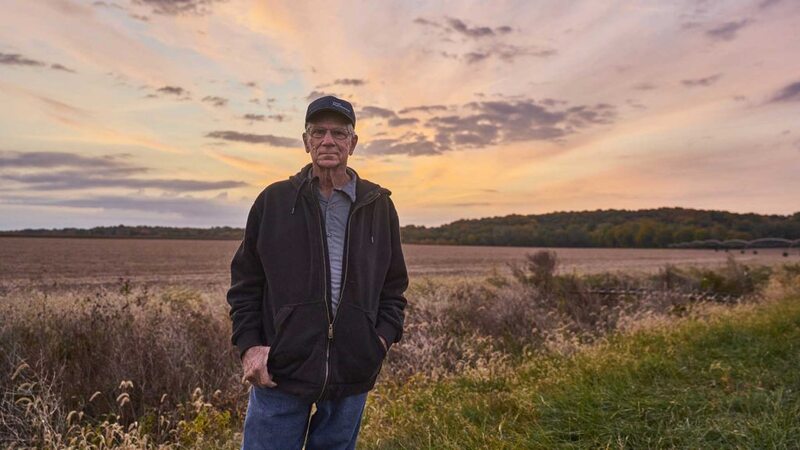 Farmers are helping drive the bioeconomy with regenerative agriculture practices supported by Cargill.
Farmers are helping drive the bioeconomy with regenerative agriculture practices supported by Cargill.
Regenerating nature is one of the core principles of a circular economy.
On the farm, regenerative agriculture practices can help achieve this. These practices have the power to sequester greenhouse gas emissions, improve water quality and use, build healthy soil to grow more sustainable food and improve farmers’ livelihoods.
That is why we partner with farmers and support them in adopting regenerative agriculture practices like cover crops, reduced till and no till. That includes:
- Partnering with Nestlé to advance regenerative agriculture by using previously discarded cocoa shells as low-carbon fertilizer pellets for wheat farmers. The wheat these farmers grow supplies Nestlé’s breakfast cereals and pet food factories in the U.K. and Ireland.
- Collaborating with the China Development Research Foundation to grow sustainable farming in the country. During China International Import Expo (CIIE), Cargill signed a one-year, 1-million-yuan ($137,300 USD) agreement to fund the foundation’s regenerative agriculture research and practice project.
- Working with farmers like Steven Flaig as part of Cargill’s innovative regenerative agriculture program, Cargill RegenConnect®. The program provides financial incentives to farmers for the adoption of regenerative agriculture practices that improve soil health and create positive environmental outcomes, which help decarbonize the agriculture supply chain.
- Cargill is Investing approximately $1 million through the Regenera Cerrado project to sponsor a broad environmental study that includes more than 30 scientists researching the benefits of adopting regenerative agriculture in Brazil’s Cerrado biome. The three-year study launched in October 2022 and will generate data on the benefits of regenerative agriculture, which will help farmers, companies and civil society institutions make science-based decisions.
Fueling the future of renewable fuels
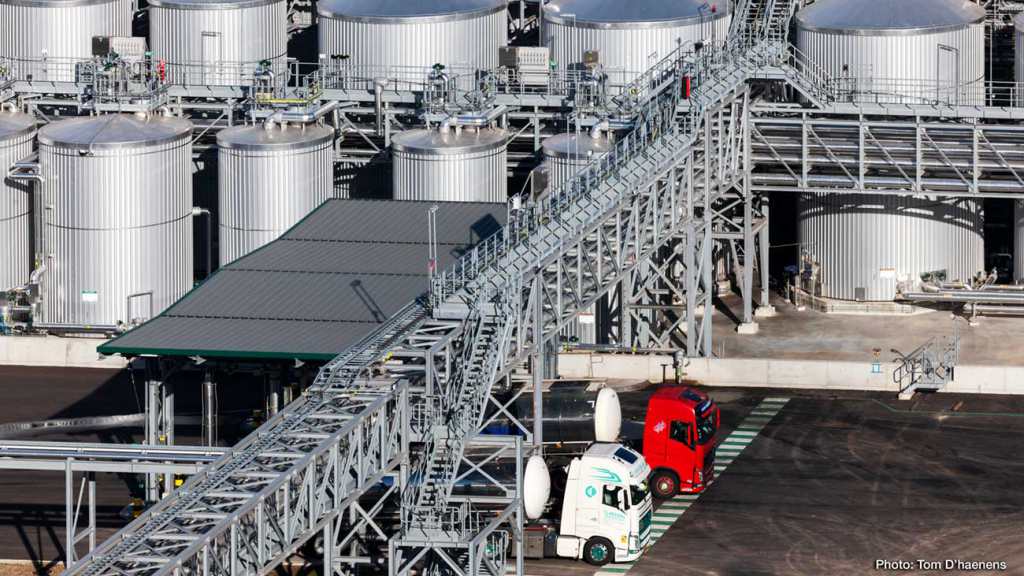 Cargill’s state-of-the-art advanced biodiesel plant in Ghent, Belgium, is helping Cargill fuel the bioeconomy by converting waste into biofuel for the transportation industry.
Cargill’s state-of-the-art advanced biodiesel plant in Ghent, Belgium, is helping Cargill fuel the bioeconomy by converting waste into biofuel for the transportation industry.
Did you know nearly one-fifth of the food system’s carbon emissions come from the food supply chain?
Reducing agriculture’s carbon footprint requires alternative, cleaner fuel sources for trucking, ocean-freight and on-farm machinery.
Enter renewable fuels — such as biomass-based diesel, renewable diesel and waste-based fuels. We are partnering with customers to provide renewable energies that help decarbonize transportation, including:
- Turning waste into biofuel at our state-of-the-art advanced biodiesel plant in Ghent, Belgium. The facility can process up to 120,000 metric tons of waste-based biofuel each year, increasing sustainable fuel options for the trucking and ocean transportation industries.
- Expanding into large-scale biogas production through a joint venture with Sustainable Fuel Plant (SFP) Zeeland in The Netherlands. SFP Zeeland produces sustainable biomethane, a renewable fuel that helps our customers reduce their greenhouse gas emissions and meet their sustainability targets.
Want to learn more about the future of food and agriculture? See how Cargill is innovating from idea to impact.
More stories

20 innovations that give a glimpse into the future of food
Learn how we’re shaping the future of food with innovations that reimagine what’s possible across food and agriculture.
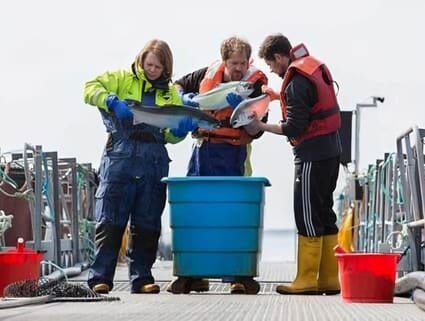
Circular economy in animal feed: 4 ways we help customers do more with less
Learn how Cargill is helping farmers build a zero-waste circular economy through innovation and strategic partnerships.
What is decarbonization? Everything you need to know.
Learn how we’re working to decarbonize the food and agriculture system.

